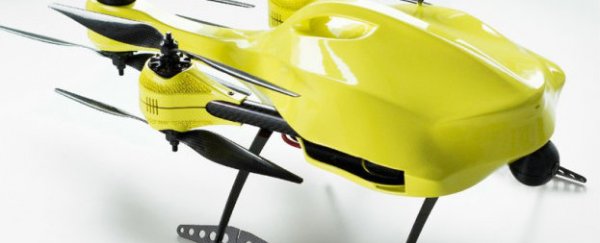When someone is experiencing cardiac arrest, the time taken to receive treatment is often the deciding factor between life and death. Public defibrillators are becoming increasingly common, but if you're untrained, they can be tricky to operate properly, plus they're not widespread enough to service all cardiac arrest patients. So an engineering student from Delft University of Technology in the Netherlands has proposed a solution - an ambulance drone that can fly a defibrillator to the patient within a fraction of the time it takes emergency services to arrive.
The ambulance drone is a hexacopter that can travel to a location within 12 square kilometres in about a minute. According to Alec Momont, the designer of the drone, this quick response can increase a heart attack patient's chances of survival tenfold.
When a patient has a heart attack and an emergency call is placed, the drone is able to track the location of the call using an in-built GPS for navigation, and fly there at a speed of 100 kilometres per hour. Upon landing, an operator tunes in like a paramedic, giving instructions to someone nearby on how to use the defibrillator to treat the patient. The drone also has an in-built camera that allows the operator to ensure the defibrillator is being used correctly.
"Currently, only 20 percent of untrained people are able to successfully apply a defibrillator," said Momont, in a press release. "This rate can be increased to 90 percent if people are provided with instructions at the scene. Moreover, the presence of the emergency operator via the drone's loudspeaker helps to reduce the panic of the situation."
In designing the prototype ambulance drone, Momont developed a new unmanned aerial vehicle (UAV) frame made of a carbon composite structure. The structure makes it light enough to carry, and the drone's arms fold back, converting it into a medical toolbox that weighs just 4 kilograms.
Momont still needs to test the drone on patients suffering from heart attacks and improve its ability to avoid obstacles mid-flight. But he hopes the ambulance drone will be taking to the skies and saving lives within the next five years.
Watch this video to see how the ambulance drone works:
Source: Delft University of Technology
